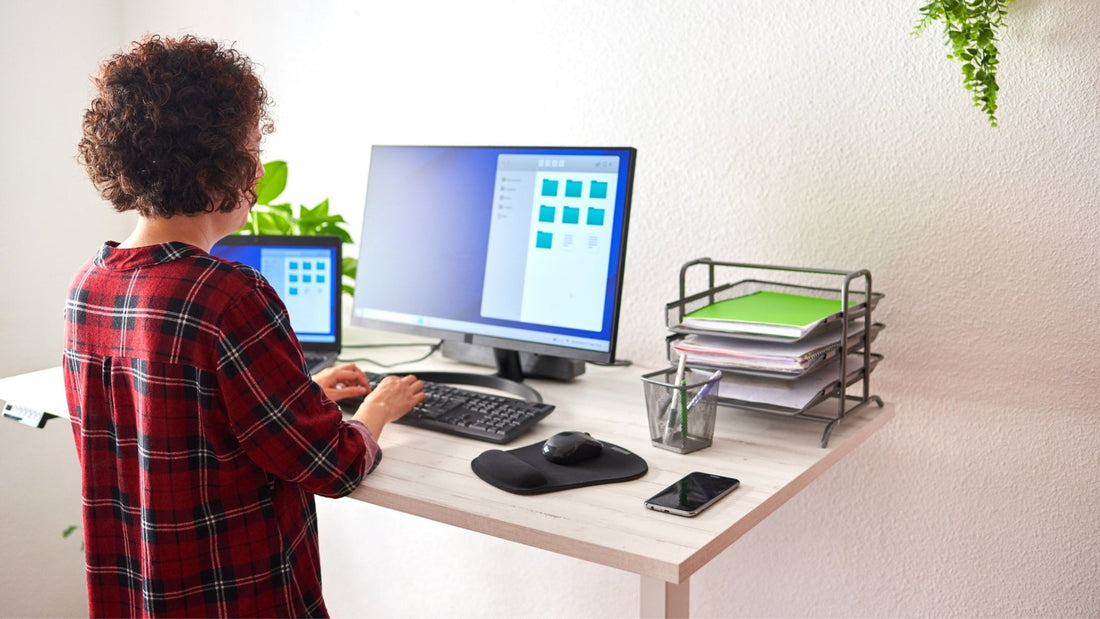
The Mechanism of Sit-Stand Desks
Sit Stand Desks, commonly known as height adjustable desks, have surged in popularity within contemporary work environments, thanks to advancements in office furniture aimed at fostering both well-being and efficiency. These sit stand desks allow individuals the flexibility to alternate between sitting and standing positions throughout their workday. By offering a solution to the stationary nature of traditional office setups, these versatile workstations introduce an enhanced ergonomic design tailored to the user's needs. The engineering behind sit-stand desks showcases the successful integration of ergonomic principles with mechanical innovation, delivering an intuitive interface that boosts both health and productivity in the workplace.
Understanding Sit-Stand Desks
Commonly known as height-adjustable desks or standing desks, sit-stand desks offer a versatile solution for work environments, accommodating both sitting and standing postures. The key appeal of these desks lies in their ability to transform the traditional, stationary desk setup into an adaptable workspace. This flexibility is crucial for combating the health risks linked to prolonged periods of sitting, such as cardiovascular issues, diabetes, and musculoskeletal disorders. Sit-stand desks enable users to alter their position throughout the day, promoting better blood flow, stimulating muscle activity, and boosting overall wellness.
The Mechanics Behind the Movement
Various mechanical and electronic approaches facilitate the height adjustability of sit-stand desks. These techniques can generally be categorized into two groups: manual and electric. Each group employs distinct mechanisms and interfaces for user interaction.
Manual Adjustment Systems
Manual sit-stand desks often utilize mechanisms such as pneumatic lifts, counterbalance systems, or cranks for adjusting their height. These methods provide a direct and often more budget-friendly approach to creating a versatile sit-stand workspace. However, they require users to manually alter the desk's height.
Crank Mechanisms:
Workstations with crank mechanisms utilize manual cranks to engage gears, facilitating the elevation or reduction of the desk's surface. While straightforward in its operation, this method demands a considerable amount of physical effort to adjust the desk's height.
Pneumatic Systems:
Desks featuring pneumatic systems harness the power of compressed air to adjust their height. By activating a lever, users unlock the desk, allowing the built-in pneumatic cylinder to smoothly transition the desk surface up or down. This approach offers a quicker and more fluid height adjustment experience compared to crank-operated desks.
Counterbalance Technologies:
Utilizing a counterbalancing approach, these technologies leverage tension springs or counterweights to balance the desk surface's mass. To adjust the height, users simply disengage a locking mechanism, manually position the desk at the preferred height, and then re-engage the lock to secure it in place.
Electric Adjustment Systems
Electric sit-stand desks represent the pinnacle of ease and functionality in the realm of height-adjustable desk technologies. Through the integration of motorized systems, these desks allow users to effortlessly transition between sitting and standing positions with just a simple press of a button.
Single-motor systems:
Desks equipped with a single motor rely on this singular electric motor to alter their height. While they might not support as much weight and could adjust more gradually compared to models with two motors, they frequently come at a more affordable price point.
Dual Motors systems:
By incorporating a pair of motors, typically positioned in each leg, these desks achieve quicker, more stable, and robust height adjustments. For expansive workstation setups requiring support for greater loads, dual-motor configurations are advantageous due to their superior weight-handling capacity.
Stand Desk Converter Mechanism
The Role of Ergonomics
Ergonomics plays a crucial role in the design and functionality of sit-stand desks. This field, focused on tailoring the work environment to suit the user's needs, is at the heart of sit-stand desk development. These innovative desks offer users the ability to personalize their workspaces in a way that addresses the potential health risks and discomfort associated with prolonged periods of sitting or standing. Enhancements such as the ability to adjust the desk's height, save preferred height settings, and the option to add ergonomic accessories like monitor arms and keyboard trays, significantly boost user comfort and efficiency.
Health and Productivity Benefits
The adoption of sit-stand desks in office environments has been associated with numerous benefits for both health and productivity. Such desks enable users to easily switch between sitting and standing positions, promoting regular movement and varying postures over the day. This dynamic approach can play a crucial role in reducing the likelihood of health issues commonly related to prolonged periods of inactivity. Moreover, the ability to alternate between sitting and standing positions has been shown to boost energy levels, decrease discomfort and tension in the muscles and joints, and foster better blood flow. Together, these advantages lead to a notable enhancement in both the productivity and overall health of individuals.
Conclusion
Sit-stand desks have radically reshaped our concept of the workplace, offering a dynamic solution to counteract the health risks tied to today's predominantly sedentary lifestyle. Featuring both manual and electric variants, these desks represent an innovative blend of mechanical engineering and ergonomic science, aimed at boosting health, comfort, and efficiency. Adopting sit-stand desks marks a significant move towards creating work environments that prioritize ergonomics and wellness. These versatile workstations allow users to alternate between sitting and standing positions, effectively diminishing the drawbacks of prolonged sitting while fostering an atmosphere that supports productivity and well-being.
